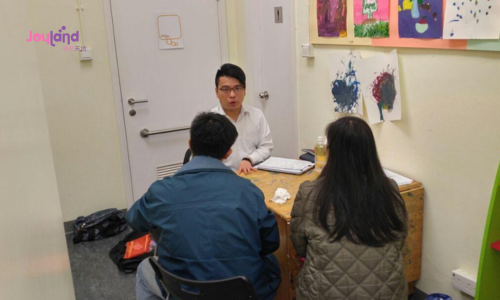Voice Disorder Therapy 聲線障礙



Voice Disorder Therapy 聲線障礙

What is Speech Therapy for Voice Disorder Therapy?
Voice disorder therapy is a specialized program aimed at improving vocal quality, pitch, loudness, and overall vocal function for individuals experiencing voice disorders.
How do I know if I need Voice Disorder Therapy?
You may benefit from voice disorder therapy if you experience altered vocal quality, voice strain, breathiness, pitch abnormalities, vocal fatigue, or other perceptual signs and symptoms outlined in a voice evaluation by a speech-language pathologist.
Why might one require Voice Disorder Therapy?
Voice disorder therapy is essential for enhancing vocal quality, restoring vocal function, reducing strain and effort during speaking, improving endurance, and addressing any discomfort or pain associated with vocal use.
What are the clinical manifestations or signs that may indicate the need for Voice Disorder Therapy?
Signs of dysphonia include rough, breathy, strained, or strained vocal quality, abnormal pitch and loudness variations, aphonia (loss of voice), phonation breaks, tremulous voice, increased vocal effort, reduced vocal endurance, and symptoms such as coughing, throat clearing, or pain/tension in the throat or larynx.
How can a diagnosis of voice disorder be confirmed?
Diagnosis of voice disorders is typically confirmed through a comprehensive assessment by a speech-language pathologist, including perceptual evaluation, instrumental assessment (such as videostroboscopy), and consideration of medical history and vocal habits.
Therapies and treatments?
Voice disorder therapy may include Conversation Training Therapy (CTT), Expiratory Muscle Strength Training (EMST), Manual Circumlaryngeal Techniques, Resonant Voice Therapy, Vocal Function Exercises (VFEs), Symptomatic Voice Therapy, and specific techniques like lip trills, straw phonation, and cup bubble exercises tailored to individual needs.
What’s involved in Voice Disorder Therapy sessions?
Voice disorder therapy sessions focus on improving vocal quality, endurance, and function through various exercises, techniques, and strategies designed to address specific vocal challenges and promote healthy vocal habits.
什麼是聲線障礙?
聲線障礙治療是一個專門的計劃,旨在改善聲音質量、音高、音量以及對於面臨聲線障礙的個人的整體聲音功能。
我如何知道是否需要聲線障礙治療?
如果您出現聲音質量變化、聲音緊張、氣息聲、音高異常、聲音疲勞,或者其他由言語治療師在聲線評估中列出的知覺徵象和症狀,您可能從聲線障礙治療中受益。
為什麼有人可能需要聲線障礙治療?
對於增強聲音質量、恢復聲音功能、減少說話時的緊張和努力、改善耐力,以及處理與聲音使用相關的任何不適或疼痛,聲線障礙治療至關重要。
可能指示需要聲線障礙治療的臨床表現或徵象是什麼?
聲音障礙的徵象包括粗糙、氣息、緊張或勉強的聲音質量、音高和音量異常變化、失音、發聲中斷、顫抖的聲音、增加的聲音努力、降低的聲音耐力,以及咳嗽、清嗓或喉嚨或喉頭的疼痛/緊張等症狀。
如何確診聲線障礙?
聲線障礙的診斷通常通過語言治療師的全面評估來確認,包括知覺評估、儀器評估(如視頻顫動成像),以及考慮醫療史和聲音習慣。
如何治療?
聲線障礙治療可能包括對個人需求量身定制的會話訓練治療(CTT)、呼氣肌力量訓練(EMST)、手動喉周技術、共鳴聲音治療、聲音功能練習(VFEs)、症狀性聲音治療,以及針對個人需求的特定技巧,如唇音、吸管發聲和杯泡泡練習。
聲線障礙治療會話中包括哪些內容?
聲線障礙治療會話著重於通過各種練習、技巧和策略來改善聲音質量、耐力和功能,旨在應對特定的聲音挑戰並促進健康的聲音習慣。
Features
- - Individualized treatment plans tailored to address specific voice disorders
- - 針對每位個人獨特需求量身定制的個性化治療計劃
- - Evidence-based therapeutic techniques targeting vocal quality and function
- - 以證據為基礎的干預措施,專注於溝通、社交技巧和行為管理
- - Focus on vocal hygiene, proper vocal technique, and lifestyle modifications
- - 專注於聲音調整、正確的發聲技巧和生活方式的改變
Target audiences
- - Individuals with occupational voice demands
- - 需應對職業性聲音需求的個人
- - Patients recovering from vocal cord surgery
- 康復中的聲帶手術患者
- - Adults or children with voice disorders affecting daily communication
- 受影響於日常溝通的成人或兒童聲線障礙患者
- - Singers or vocal performers experiencing vocal strain / Teachers or public speakers with voice fatigue
- 經歷聲音負荷的歌手或聲樂表演者/感受到聲線疲勞的教師或公眾演講者
Instructor
Focusing on voice quality, pitch, volume, and resonance.
© 2025 Copyright @ 2025 Joyland Hong Kong.
